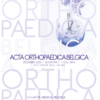The role of physical activity as conservative treatment for massive rotator cuff tears in elderly patients: a systematic review
massive rotator cuff tears; physical activity; exercise; aging; elderly
Published online: Feb 17 2023
Abstract
The aim of this systematic review is to determine the effectiveness on functional and pain outcomes of different exercise protocols as a conservative treatment for massive, irreparable rotator cuff tears in elderly patients. A literature search was carried out consulting Pubmed -Medline, Cochrane central and Scopus to select randomized clinical trials, prospective and retrospective cohort studies or case series, that evaluated functional and pain outcomes after physical therapy in patients aged 65 or over, affected by massive rotator cuff tears. The present systematic review followed the Cochrane methodology for systematic reviews and the reporting was implemented using through the PRISMA guidelines. The Cochrane risk of bias tool and MINOR score were used for methodologic assessment. Nine articles were included. Data concerning physical activity, functional outcomes and pain assessment were obtained from the included studies. The exercise protocols assessed within the included studies were extremely wide with equally different methods of evaluation of the outcomes. However, most of the studies demonstrated a trend of improvement after the treatment, in terms of functional scores, pain, ROM and quality of life. An intermediate methodological quality of the included papers was assessed through the risk of bias evaluation. Our results showed a positive trend in patients who underwent physical exercise therapy. Our conclusion is that further studies of a high level of evidence are needed to achieve consistent evidence to improve clinical practice in the future.
